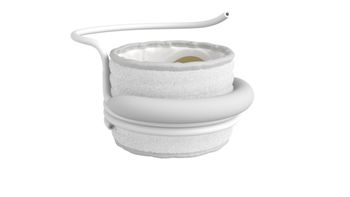
There’s a better way to do urgent care
What is needed is a new model of immediate care in which providers don’t just look to treat the symptoms presenting themselves at that time, but instead allow them to treat the surface-level symptoms while being able to dig deeper and look at the root cause of each patient episode.
If you’ve driven past a suburban strip mall lately, chances are you’ve seen an
That drastic growth in supply is responding to demand. In 2022, urgent care clinics treated around 206 million non-emergent cases, many of them for primary care needs.
But that is impossible. We would need
What is needed is a new model of immediate care in which providers don’t just look to treat the symptoms presenting themselves at that time, but instead allow them to treat the surface-level symptoms while being able to dig deeper and look at the root cause of each patient episode, so they can make sure it doesn't happen again.
Here’s how it works. This new model still allows for the idea of “first call resolution,” but comes at it from a fundamentally different approach. Instead of assuming each engagement can be handled in one visit, the center treats every inbound case as a potential episode that could last as long as three days virtually. Mobile labs or vital signs - a simple blood pressure cuff sent to the home - can be a part of that solution. When a clinician calls over the next few days to see how the patient is feeling and responding to treatment, she essentially gets the benefits of a hospital observation stay, without the financial and emotional cost of spending hours or days in the hospital.
For providers, this model gives them the tools to paint a broader picture of the patient’s health problem and get to the root cause of it, potentially solving the issue that brought the patient in the door to prevent a subsequent similar event.
For instance, a 68 year-old woman with a UTI with borderline low blood pressures and a history of chronic kidney disease needs treatment. Most urgent care services would either send her to the hospital or provide a script and send the patient home with instructions to follow-up with her PCP and seek care if she doesn’t improve. It’s like a hail mary - throwing information down the field and hoping for the best.
Instead of one, fragmented 20-minute visit, the clinicians in this new model of care treat her visit as a potential episode of care that could last days. But in this case, in addition to having a care coordinator help her figure out how to pick up and take her antibiotics and make any follow-up appointments, a nurse can monitor her symptoms, get serial labs and blood pressures at home, and round with a physician about how things are progressing. At the same time as the current issues are being treated, these same providers are working on what led to this and working with patient and PCP to try to prevent it the next time.
Done at scale, it can lead to real results across a population. At Devoted, we launched a program like this called Care OnDemand and, in the three years since, we have seen a steady decrease in per member, per month costs. Patients have also responded well to the program, with trust scores - whether you would trust the provider with your future health concerns - above 92%. This approach can truly bring down costs while connecting patients to better, long-term care.
In short, each of these episodes not only addresses an acute need, solving a problem and often avoiding a hospital event, but it also opens a deeper conversation with the patient that allows for the resolution of underlying medical, social, financial, and behavioral contributors to future hospital events. That means less time in a hospital, and less money spent by the patient and the health care system, all for better health.
Neil Wagle, MD, is the chief medical officer of
Alec Petersen, MD, is the chief medical officer of acute and specialty care of
Newsletter
Stay informed and empowered with Medical Economics enewsletter, delivering expert insights, financial strategies, practice management tips and technology trends — tailored for today’s physicians.








